Description Of Disposable Medical Supplies Molds
——
KRMOLD Disposable Medical Supplies Molds (DMSM) are special tools designed for the production of disposable medical supplies plastic products (e.g. syringes, catheters, surgical instruments, etc.).
KRMOLD designs injection molds by 3D modeling the function and appearance of the plastic medical supplies to be produced to design the optimal feed point location and size for mold flow analysis, and reserves a reasonable amount of deformation on the molds for adjustment after mold testing. At the same time, KRMOLD will design a reasonable water circuit and thimble layout for the injection mold to prevent the product from shrinkage and deformation due to uneven heating and product deformation due to unbalanced ejection.
The design and manufacture of Disposable Medical Supplies Molds requires strict compliance with the safety and functionality standards of the medical industry to ensure that the products meet the requirements for clinical use. This is a very high requirement for the professionalism of injection mold manufacturers. As a professional injection mold manufacturer in China, KRMOLD has nearly 20 years of experience in the production of injection molds and has helped many customers in the field of medical equipment to complete the design and production of medical injection molds. Welcome to contact us to get the best production solutions and case references.
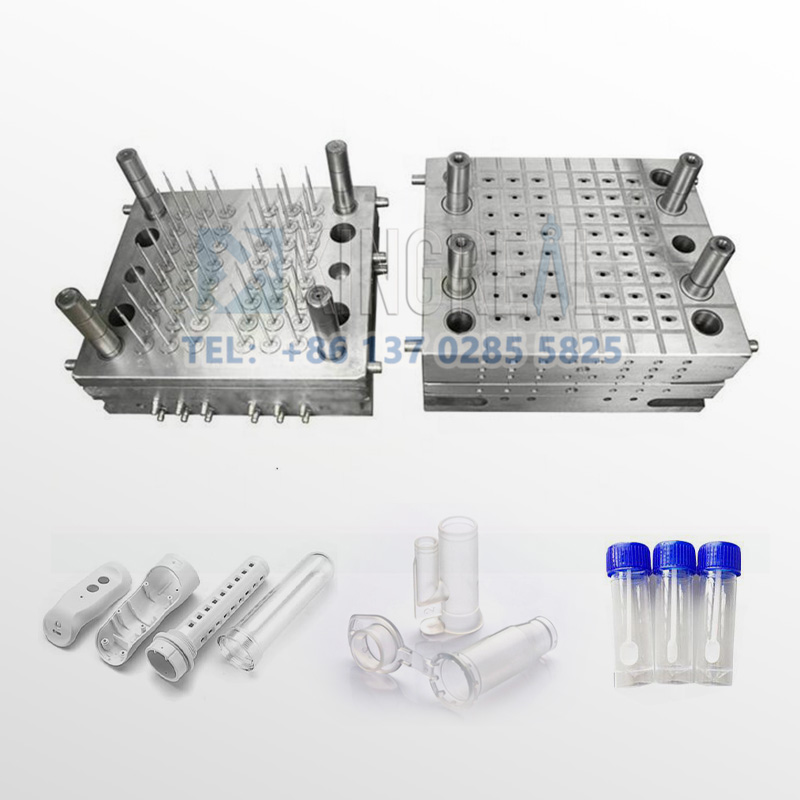
What Is The Advantage Of Plastic Disposable Product?
—
“Why do you need injection molds to produce disposable medical consumables?”
Our advantage

Disposable medical consumables need strict dimensional accuracy, injection molds through five-axis CNC machining and precision EDM (EDM) technology, the tolerance can be controlled within ± 0.005mm. Medical consumables often contain thin-walled, micro-porous or transparent parts, the mold through multi-slider parting, insert splitting and other technologies to achieve integrated molding, reducing the subsequent assembly links.
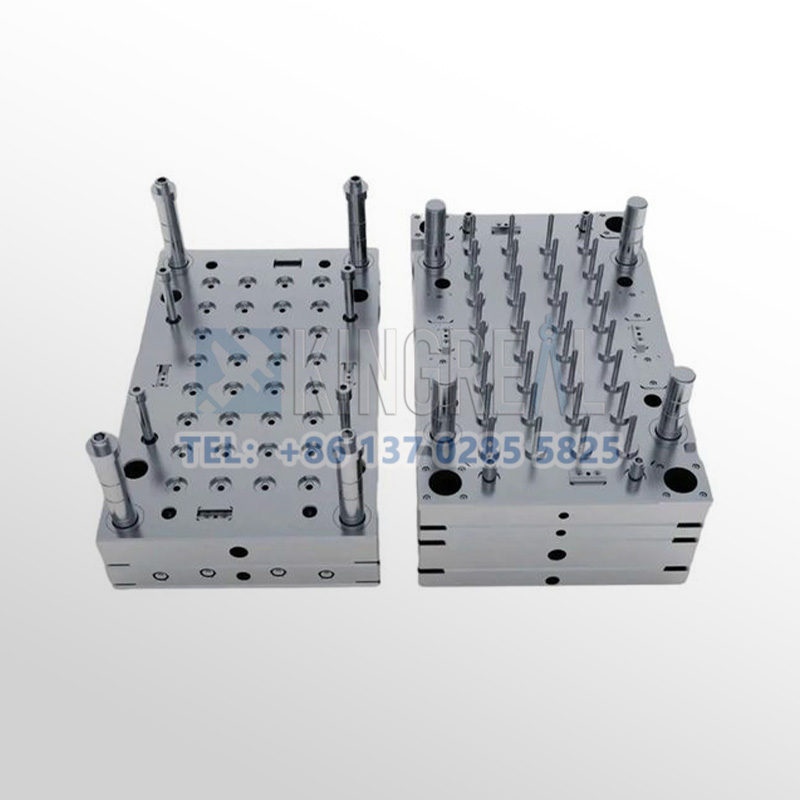
Disposable medical consumables need to meet the very high demand for sterilization, medical injection molds use S136, 718H and other stainless steel materials, surface polishing to Ra ≤ 0.1μm (high finish requirements and even Ra 0.02μm), to avoid residual contamination, and injection molds can withstand high temperature sterilization and ultraviolet irradiation, in line with the GMP standards for production environment.
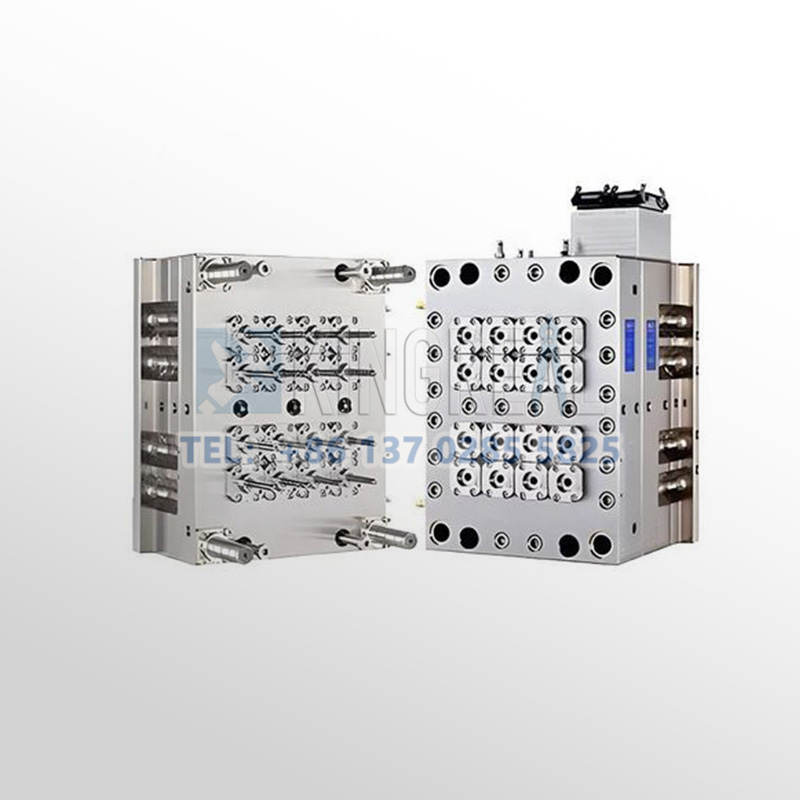
KRMOLD injection mold can be designed with 32-96 cavities combined with hot runner technology, the molding cycle time can be shortened to 5-30 seconds, the production capacity increased by more than 50%, through the high-speed opening and closing of the mold and precise control, to achieve high efficiency mass production. Achieve the production of 32-96 pieces of single product in one injection molding process, compared with single-cavity injection mold to greatly improve the production output. Multi-cavity injection molds can adopt robotic automatic pickup, vacuum feeding system, etc. to reduce manual intervention and reduce the risk of pollution.
Design Feature Of Disposable Medical Supplies Molds
——
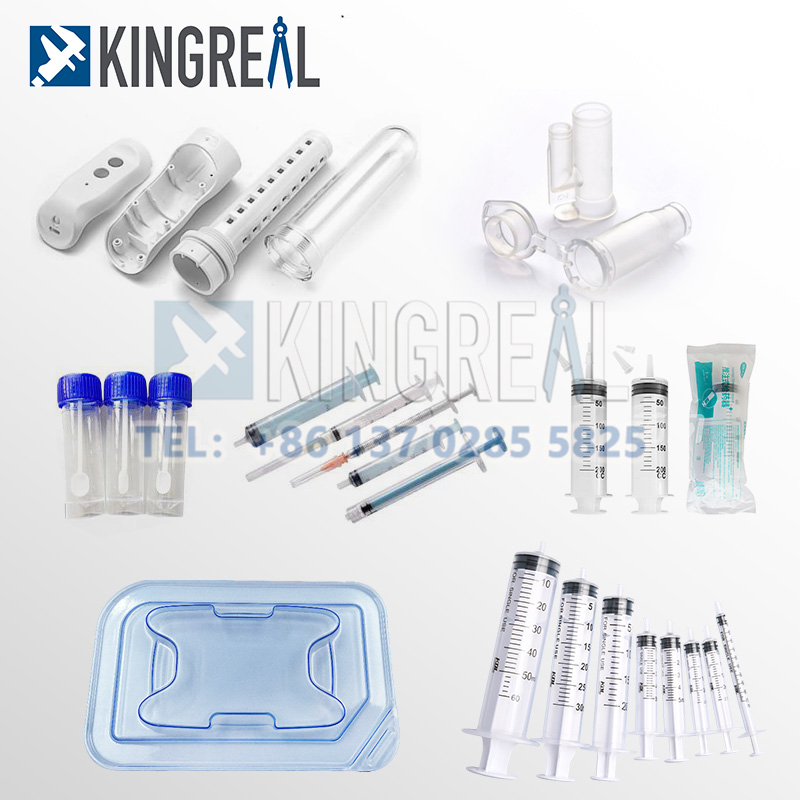
High precision molding
Medical injection mold tolerance control needs to be as high as ±0.005mm, such as insulin needle holder mold tip aperture precision ≤ 0.01mm, which for medical injection mold precision manufacturing requirements are very high, the surface polished to Ra ≤ 0.1μm (mirror polishing and even Ra 0.02μm), to avoid residual contamination of the material, KRMOLD use five-axis CNC machine tools, precision electric discharge (EDM) and wire cutting technology to manufacture injection molds, accuracy tolerance can be controlled to ±0.005mm, and the use of ultra-precision grinding technology to achieve the key surface flatness ≤ ±0.005mm, and the use of ultra-precision grinding technology to achieve the key surface flatness.
KRMOLD uses five-axis CNC machine tools, precision electric discharge (EDM) and wire cutting technology to manufacture injection molds, with precision tolerance controlled at ±0.005mm, and ultra-precision grinding technology to achieve key surface flatness ≤±0.001mm, and three-dimensional measurement instrument to detect complex shapes and three-dimensional dimensions, with control accuracy of ±0.001mm.
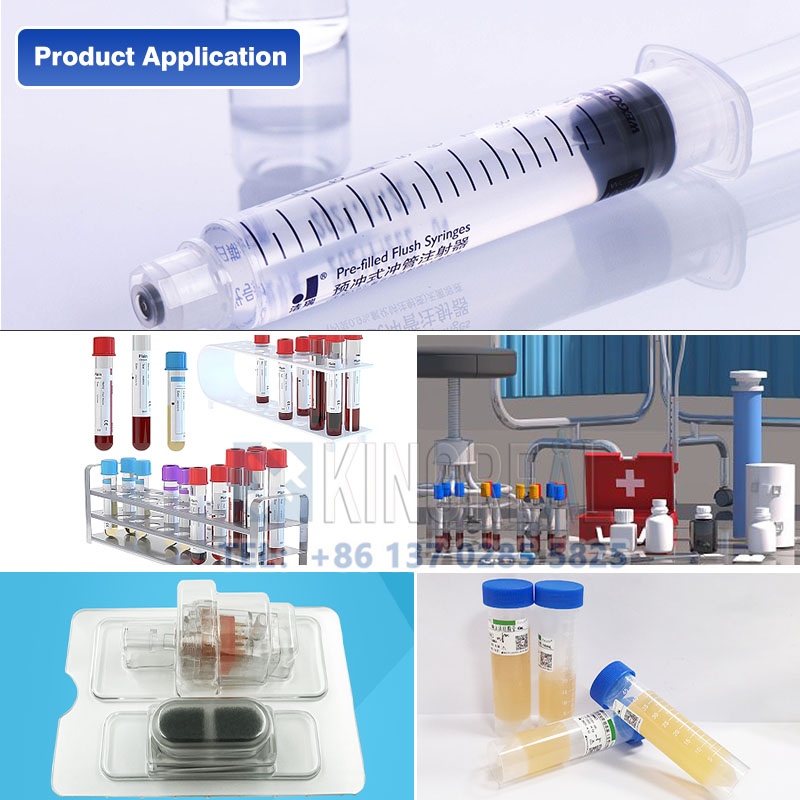
Complex structure adaptability
Disposable Medical Supplies Molds (Disposable Medical Supplies Molds) need to achieve efficient adaptation to the complex structure of medical consumables such as thin-walled, micro-porous, multi-cavity, and transparent parts through precise design, material selection, process optimization, and intelligent technology.
The injection mold is designed for complex parts such as biopsy forceps handles and transparent catheters, and adopts multi-slider parting mechanism and insert splitting design to decompose the complex features into modules that can be molded independently, and determines the optimal location and size of the adhesive inlet point through the mold flow analysis.
Typical Injection Mold Cases
—
Mold Type | Specification | Design Feature |
Insulin Needle Holder Mould | 96-cavity full hot runner design, PP material, molding cycle time 5 seconds, precision error ≤ 4μm. | Adopting 96-cavity full hot runner layout, through the side feed direct dispensing technology, to achieve uniform filling of melt, reduce cold runner waste, shorten the molding cycle time to 5 seconds, and increase production efficiency by more than 50%. |
New Crown Test Box Shell Mould | Adopting PLA degradable material, optimized gate design to avoid thermal degradation, suitable for rapid mass production demand. | The full hot runner technology reduces the manual trimming of gates, and with the automation of robotic pickup, the daily output of a single mold can reach more than 100,000 pieces. |
Hemodialyzer Mould | Interlocking slider structure + layered cooling water circuit, solving the problem of shell segment difference and screw thread matching precision. | The slider at both ends of the mold adopts interlocking mechanism, with guide pin positioning (clearance ≤ 0.005mm), to prevent deformation of the slider during the injection process leading to segment difference. |
FAQ:
1.How to get a quote for custom injection molds?
Specify the type of plastic (e.g. PP, ABS) and post-processing requirements (e.g. spraying, silk-screen printing), and provide 2D or 3D plastic part drawings should be provided. At the same time, provide the production volume, appearance requirements, tolerance standards, etc.
2. How long does it take to get a quote for an injection mold?
Generally speaking, our engineers will start to prepare the quotation immediately after the customer provides the complete production requirements. Usually it takes about 1-3 days.
3. What is the lead time for injection molds?
The lead time for regular injection molds is usually 30-60 days, and may be longer for complex molds. For example, the typical lead time for liquid silicone molds is around 60 days, covering design, manufacturing, mold testing, etc.
4. How to ensure the dimensional accuracy of the mold and product consistency?
High-precision processing technology: High-precision equipment such as CNC machining centers (CNC) and electric discharge machining (EDM) are used to optimize the design process in combination with CAD/CAM software.
Quality control: Inspection of key dimensions of the mold by Coordinate Measuring Machine (CMM) and verification of multiple sample batches during the trial molding stage.
Material Selection: Use die steel with high wear resistance (e.g. H13, S136) and surface treatment (e.g. nitriding, chrome plating) for die nuts to extend the life.
Specify the type of plastic (e.g. PP, ABS) and post-processing requirements (e.g. spraying, silk-screen printing), and provide 2D or 3D plastic part drawings should be provided. At the same time, provide the production volume, appearance requirements, tolerance standards, etc.
Generally speaking, our engineers will start to prepare the quotation immediately after the customer provides the complete production requirements. Usually it takes about 1-3 days.
The lead time for regular injection molds is usually 30-60 days, and may be longer for complex molds. For example, the typical lead time for liquid silicone molds is around 60 days, covering design, manufacturing, mold testing, etc.
High-precision processing technology: High-precision equipment such as CNC machining centers (CNC) and electric discharge machining (EDM) are used to optimize the design process in combination with CAD/CAM software. Quality control: Inspection of key dimensions of the mold by Coordinate Measuring Machine (CMM) and verification of multiple sample batches during the trial molding stage. Material Selection: Use die steel with high wear resistance (e.g. H13, S136) and surface treatment (e.g. nitriding, chrome plating) for die nuts to extend the life.
After every 50,000 molds, check the guide pillar, ejector pin and other wear parts, and clean up the residual plastic and rust on the mold surface. Use high temperature grease for sliding parts (e.g. tilt top, slider) to reduce friction loss. Ensure that the water circuit is smooth and the temperature difference is ≤5℃ to avoid cracking of the mold due to thermal stress.
Mould cost of materials accounted for about 30-40% (such as 1 ton of P20 steel price of about 20,000 yuan), processing costs accounted for more than 50% (CNC labor hourly rate of about 80-150 yuan / hour). Small batch production can choose aluminum mold or simplify the structural design; more than 100,000 pieces is recommended to use carbide inserts to enhance life!
Mould injection products need to fully meet the design requirements (such as size, appearance), and can be continuous and stable production. Mold marking, inspection reports (such as material hardness test) and engineering drawings should be complete.
Mould steel (such as S136H, NAK80 and other imported materials cost more) and the type of mold embryo (aluminum mold short-term cost is low but short life) directly affect the cost, the use of CAD/CAE/CAM design technology, hot runner system, etc. will increase the upfront investment, but can enhance the long-term benefits (such as reducing the sprues, increase production capacity).